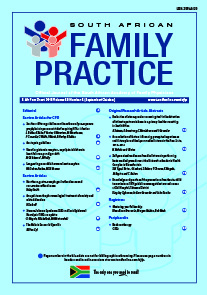Long-acting reversible hormonal contraception
Keywords:
long-acting reversible hormonal contraception, progesterone only injectables, subdermal implants, levonorgestrel Intrauterine contraception
Abstract
Long-acting reversible hormonal contraceptives are effective methods of birth control that provide contraception for an extended period without requiring user action. Long-acting reversible hormonal contraceptives include progesterone only injectables, subdermal implants and the levonorgestrel intrauterine system. These methods have several advantages over other reversible contraceptive methods. More importantly, once in place, they require minimal maintenance and their duration of action ranges from 8 weeks to 5 years. Despite the advantages of long-acting reversible hormonal contraceptive methods, they are infrequently used in South Africa. Short-acting methods, specifically oral contraceptives and condoms, are by far the most commonly used reversible methods. A shift from the use of short-acting methods to long-acting reversible contraceptive methods could help reduce the high rates of unintended pregnancies in South Africa. In this review of long-acting reversible hormonal contraceptive methods, we discuss the long-acting progesterone injectables, the etonogestrel implant and the levonorgestrel intrauterine system available in South Africa, the side effects of each of these preparations and the non-contraceptive benefits. It is imperative that health professionals and educators inform women of reproductive age about the benefits, risks, and common side effects of long-acting reversible hormonal contraception to improve consideration and recognition of these methods.
Published
2016-09-23
Section
Review Articles
By submitting manuscripts to SAFP, authors of original articles are assigning copyright to the South African Academy of Family Physicians. Copyright of review articles are assigned to the Publisher, Medpharm Publications (Pty) Ltd, unless otherwise specified. Authors may use their own work after publication without written permission, provided they acknowledge the original source. Individuals and academic institutions may freely copy and distribute articles published in SAFP for educational and research purposes without obtaining permission.

